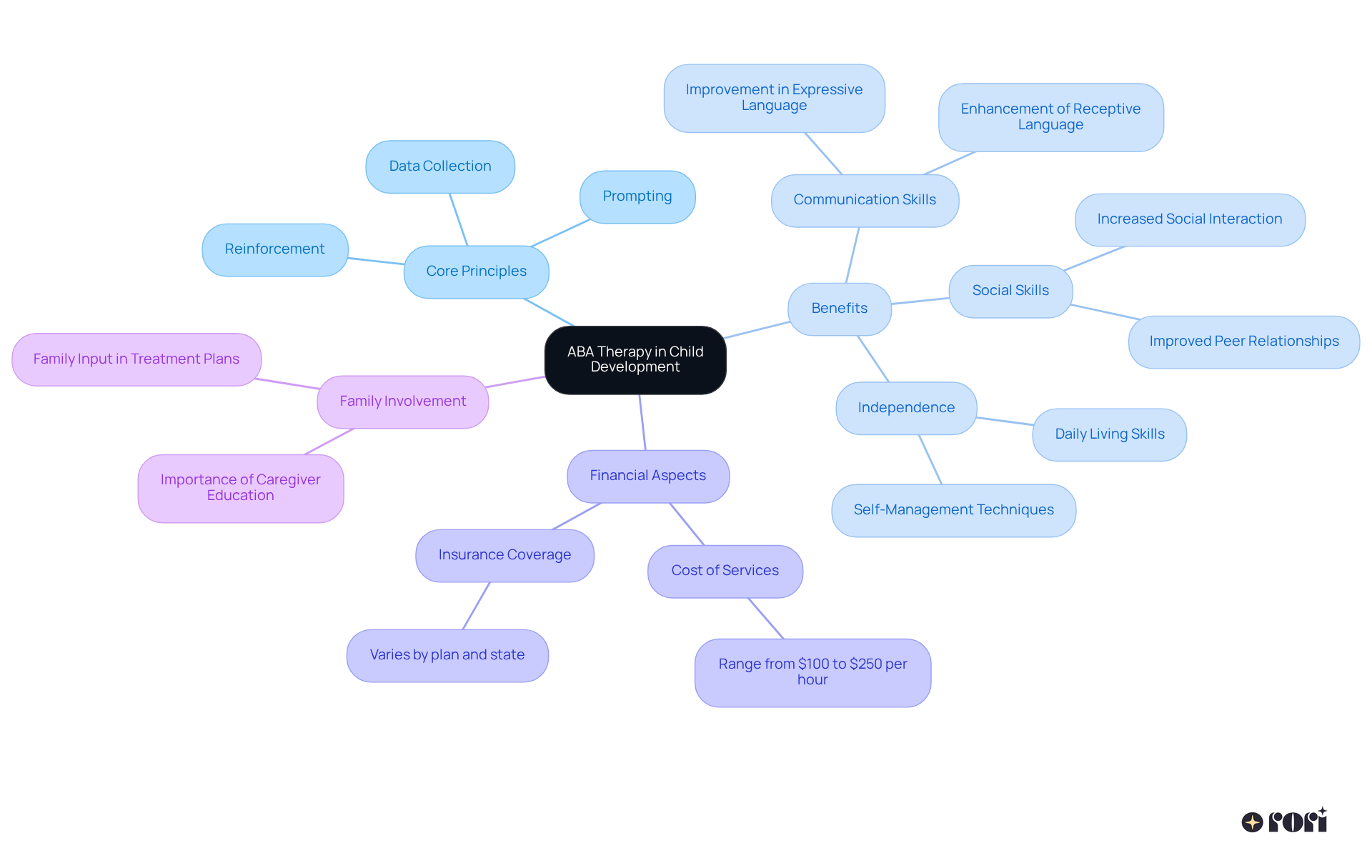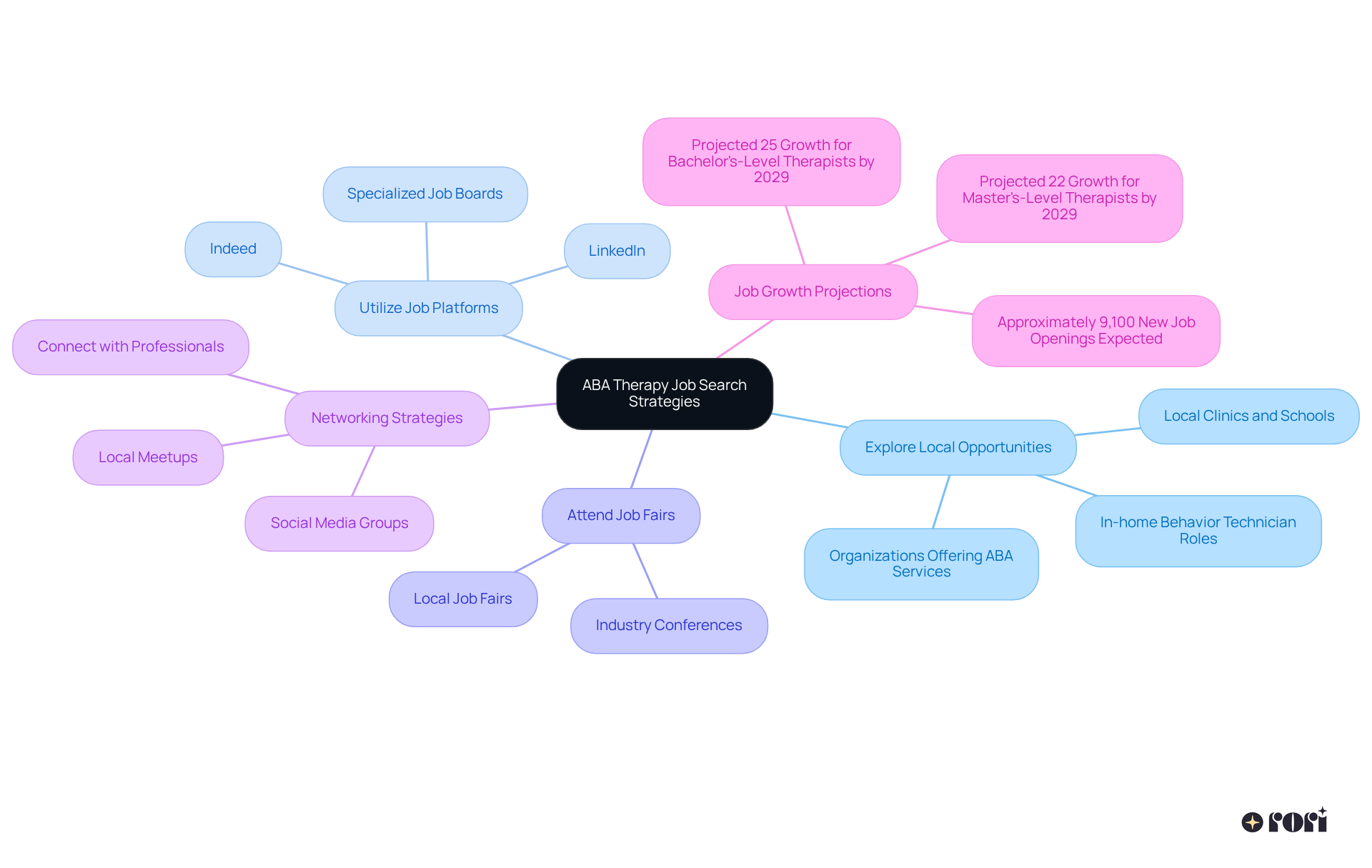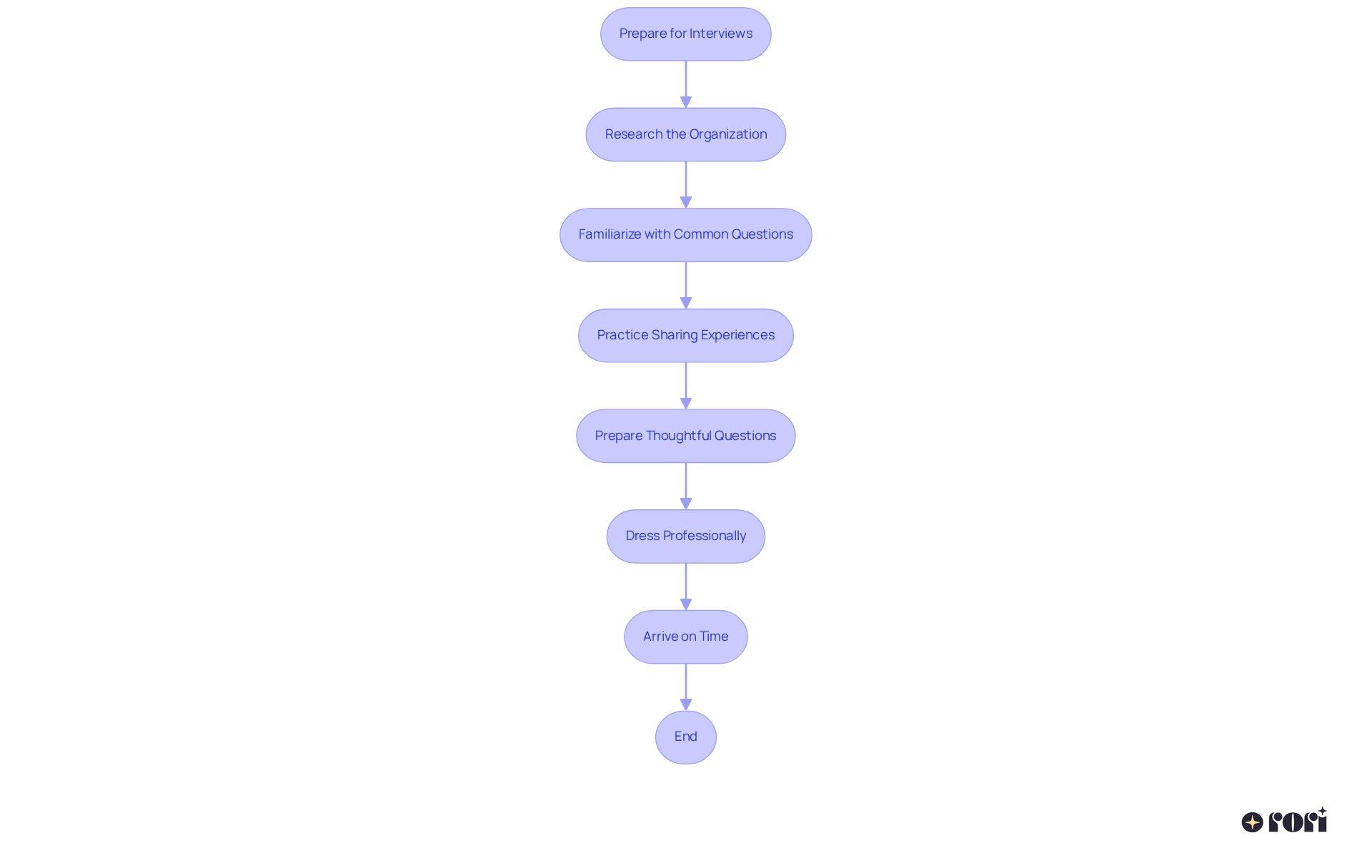Securing an ABA therapy job nearby can feel like a big task, but it really comes down to four key steps!
Mastering ABA concepts and completing your training can really boost your employability. Plus, networking and thorough interview prep can significantly increase your chances of landing a position in this exciting and growing field. Let’s explore this together!
Navigating the landscape of Applied Behavior Analysis (ABA) therapy jobs can be both exciting and a bit overwhelming, especially as the demand for qualified professionals continues to grow. This guide is here to offer a roadmap for aspiring ABA therapists, detailing essential steps from understanding the core principles of ABA to securing the necessary certifications and exploring local job opportunities.
But with so many paths to take, how can you stand out in a competitive job market? And more importantly, how can you ensure you’re equipped to make a meaningful impact on the lives of children with autism? Let’s explore this together!
Applied Behavior Analysis (ABA) intervention is a scientifically validated method designed to improve specific behaviors and skills in youth with autism. This approach recognizes that every individual has unique needs, which means customized interventions are essential. Research shows that ABA treatment significantly enhances communication and social skills. In fact, studies indicate that early intervention can lead to remarkable advancements in these areas. For instance, children who engage in ABA intervention early often demonstrate significant improvements in daily living skills, communication, and social interactions.
As you consider an ABA therapy job near me, it's important to get familiar with the core principles of ABA, like reinforcement, prompting, and data collection. These foundational concepts not only prepare you for your job search, including finding an ABA therapy job near me, but also empower you to make a meaningful impact in the lives of young individuals and their families. The effectiveness of ABA intervention shines through its ability to foster greater independence in young people, making it a vital resource for their development. By understanding and applying these principles, you can truly contribute to the transformative journey of children with autism, helping them reach their fullest potential.
Additionally, understanding the financial aspects of ABA treatment is crucial for families exploring their options. Services can range from $100 to $250 per hour, depending on the type of therapy provided. Caregiver education plays a key role here, equipping families with the knowledge and skills to actively support their child's behavioral goals. When caregivers grasp the principles of ABA, they can make informed decisions that enhance their child's progress, leading to better behavioral outcomes and a more harmonious family dynamic. Let’s explore this together!

Securing a position in ABA treatment starts with getting the right certifications. If you're aiming to become a Registered Behavior Technician (RBT), your journey begins with a 40-hour online training program offered by Rori Care. This course covers essential behavior analysis topics and offers practical lessons to help you get started. After completing the training, you’ll need to pass a competency assessment to showcase your skills and the RBT Knowledge Test, which checks your understanding of the RBT Task List. Plus, don’t forget to pass a criminal background check to qualify for RBT certification. This certification is so important; it lays the groundwork for you to work effectively under the guidance of certified behavior analysts.
If you’re looking to take your career to the next level, consider pursuing a master’s degree in behavior analysis or a related field. Once you’ve earned your degree, you can apply for the Board Certified Behavior Analyst (BCBA) certification. This credential not only boosts your job prospects but also shows your commitment to ethical standards and professional excellence in behavior analysis.
Interestingly, statistics show a rising trend in the number of professionals obtaining BCBA certification each year. Recently, over 47,840 individuals were newly certified! This increase highlights a growing demand for qualified behavior analysts in various settings, from schools to healthcare facilities. Staying updated on continuing education requirements is key to maintaining your credentials, demonstrating your dedication to ongoing professional growth.
Additionally, Rori Care offers guidance on payment options that can help cover up to 100% of ABA treatment through insurance. This support can really ease the financial burden for families. By following these steps and using Rori Care's resources, you can significantly boost your employability and effectiveness for an ABA therapy job near me. Let’s explore this together and see how you can make a difference!

To kickstart your job search for an ABA therapy job near me, why not begin by exploring local clinics, schools, and organizations that offer these services? For instance, there are In-home Behavior Technician positions available in the San Francisco Bay Area, which can be part-time, full-time, or even hybrid! These roles are all about empowering caregivers with the tools and strategies they need to support children's behavioral goals through active involvement and data collection.
Don't forget to utilize job search platforms like LinkedIn and Indeed to uncover openings for an ABA therapy job near me. Plus, attending local job fairs and industry conferences can be a fantastic way to meet potential employers and learn about an ABA therapy job near me.
Networking is key in securing a job in this field! Connecting with professionals through social media groups, forums, and local meetups can really make a difference. Building relationships with fellow ABA practitioners can lead to job referrals and valuable insights into the hiring landscape.
Did you know that there is a rising demand for an ABA therapy job near me? By 2029, it's projected that there will be a 25% growth in the availability of ABA therapy jobs near me for bachelor's-level therapists and a 22% growth for master's-level therapists! Effective networking strategies will be essential for navigating this competitive job market. In fact, approximately 9,100 new job openings for an ABA therapy job near me are anticipated in the next decade, highlighting the growing demand in the field.
Many professionals emphasize the importance of maintaining connections and sharing resources, as these relationships can significantly enhance your job search experience. As one ABA professional wisely noted, 'Networking is not just about finding a job; it's about building a community that supports your career growth.' Let's explore this together!

Getting ready for an interview in ABA? It’s super important! Start by diving into research about the organization. What’s their philosophy? How do they approach ABA therapy? Getting familiar with common interview questions is also key—especially those that dig into behavior analysis techniques and case studies. Practicing how to share your experiences in a way that aligns with the organization’s mission will help you shine with confidence.
Don’t forget to think of some thoughtful questions to ask the interviewer! This shows you’re genuinely interested in the role and the company. And, of course, dressing professionally and arriving on time will make a great first impression. Remember, interviews aren’t just about showcasing your qualifications; they’re also a chance for you to see if the organization fits with your career goals. Let’s explore this together!

Securing a rewarding job in ABA therapy can feel like a multifaceted journey. It involves:
Each of these steps is vital—not just for enhancing your professional prospects but for ensuring that you can truly make a difference in the lives of children with autism and their families.
Key insights from this guide remind us of the importance of:
With the demand for ABA therapists expected to rise significantly by 2029, being proactive in your job search and connecting with professionals in the field can really give you that competitive edge. Plus, taking the time to prepare for interviews can showcase your dedication and alignment with potential employers' missions.
Ultimately, we can’t overstate how significant ABA therapy is in fostering independence and improving the quality of life for children with autism. As the job market for ABA therapists continues to evolve, staying informed and engaged is essential. By taking the initiative to learn, network, and prepare effectively, you can not only secure a fulfilling position but also make a meaningful impact in your community. Let’s embrace this opportunity together to contribute to this vital field and help shape brighter futures for children and families!
What is Applied Behavior Analysis (ABA) therapy?
ABA therapy is a scientifically validated intervention designed to improve specific behaviors and skills in youth with autism, focusing on customized interventions to meet individual needs.
How does ABA therapy benefit children with autism?
ABA therapy significantly enhances communication and social skills, leading to remarkable advancements in daily living skills, communication, and social interactions, especially when implemented early.
What are the core principles of ABA therapy?
The core principles of ABA therapy include reinforcement, prompting, and data collection, which are essential for effective intervention and support.
How can understanding ABA principles help in finding a job in this field?
Familiarity with ABA principles prepares individuals for job searches in the field and empowers them to make a meaningful impact in the lives of children with autism and their families.
What is the financial cost of ABA therapy services?
The cost of ABA therapy services can range from $100 to $250 per hour, depending on the type of therapy provided.
Why is caregiver education important in ABA therapy?
Caregiver education equips families with the knowledge and skills to support their child's behavioral goals, leading to better behavioral outcomes and a more harmonious family dynamic.